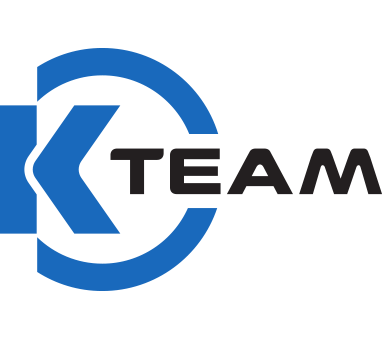Khepera III
| Introduction | Specifications | Linux OS | Manuals / Downloads | Distributors |
Specifications
Main Features
- Compact
- Easy to Use
- Powerful Embedded Computing Power
- Swappable battery pack
- Multiple sensor arrays
- KoreBot compatible Extension bus
- High quality and high accuracy DC motors
|
Khepera III Specifications |
|
|---|---|
| Elements | Technical Information |
| Processor | DsPIC 30F5011 at 60MHz and Arm at 600MHz (see Korebot II below) |
| RAM | 4 KB on DsPIC, 128 MB on KoreBot II Extension |
| Flash | 66 KB on DsPIC, 32 MB on KoreBot II Extension |
| Motion | 2 DC brushed servo motors with incremental encoders (roughly 22 pulses per mm of robot motion) |
| Speed | Max: 0.5 m/s |
| Sensors | 8 Infra-red proximity and ambient light sensors with up to 30cm range, 2 Infra-red ground proximity sensors for line following applications, 5 Ultrasonic sensors with range 20cm to 4 meters |
| I/O | Several IO with KoreIO Extension 2 programmable LED |
| Power | Power Adapater Swapable Lithium-Polymer battery pack (1350 mAh) |
| Autonomy | ~8 hours, moving continuously, without KoreBot. Additional turrets will reduce battery life. |
| Communication | Standard Serial Port, up to 115kbps USB communication with KoreBot Wireless Ethernet with KoreBot and WiFi card |
| Extension Bus | Expansion modules can be added to the robot using the KB-250 bus. |
| Size | Diameter: 130 mm Height: 70 mm |
| Weight | Approx 690 g |
| Payload | Approx 2000 g |
| Simulator | V-REP, realistic 3D Simulator and robot programming (included for education), model for Khepera III included |
| Development Environment for Autonomous Application | GNU C/C++ compiler, for native on-board applications with KoreBot. Freeware |
| Remote control Software via tether or radio | LabVIEW® (on PC, MAC or SUN) using RS232.
MATLAB® (on PC, MAC, Linux or SUN) using RS232. SysQuake® (on PC, MAC, Linux or SUN) using RS232. Freeware. Any other software capable of RS232 communication |
Korebot 2 Specifications
| Elements | Technical Information |
|---|---|
| Processor | Intel XSCALE PXA-270 @ 600MHz |
| RAM | 128 MBytes |
| FLASH | 32 MBytes |
| Power Supply | Input: 5VOutput: Embedded power regulation for Compact Flash, and other 3.3V extensions… |
| Power Consumption | Idle: 500mWMax: 1200mW |
| Connectors | 1 x Compact Flash Type I socket 1 x uSD socket1 x KB-250 Interface (2×50-pin, see below) 2 x RS232 (KoreConnect needed) 1 x USB Host (mini USB connector) 1 x Gumstix extension connector |
| KB-250 Interface | 3x Serial RS332 (including Bluetooth compatible port)3x USB Master port (to connect USB camera)1x MMC controller (MutiMedia Card)1x LCD controller1x I2C bus (400kb/s)1x SSP/SPI bus (1.8Mb/s)1x AC97 sound controller2 x PWM pins53 x GPIO pins (if not used for above features) |
| OS Support | Linux 2.6.x (OpenEmbedded Ansgtröm Distribution) |
| License | GPL license on boot loader. |
| KoreBot Platform Package | System bootloader in executable format. GNU-Linux Development Based Environment. |
| Optional Extensions | KoreMotor drive up 4 DC motors. KoreConnect (Easier connection to RS232 ports and USB Client). KoreJTAG (JTAG to USB interface, credits to S. Gerlach). KoreUSBCam (USB Camera module) KoreIO (Analog I/O, digtal out, servo control). KoreWifi |
| Size | 85mm x 57mm x 33 mm |
| Weight | 52g |
KoreBot II Standard Connectivity
KoreBot II provides an embedded USB Host to allow the connection of any USB device directly to board. Such a feature allows the connection of standard:
- USB video camera
- Keyboard & mouse
- USB storage
- PDAs
- etc …
KoreBot II provides One Compact Flash Slot to allow the connection of standard pocket PC extensions. Such a features allow the connection of standard:
- Wireless Ethernet card
- Bluetooth card
- Flash Storage card
- etc …
